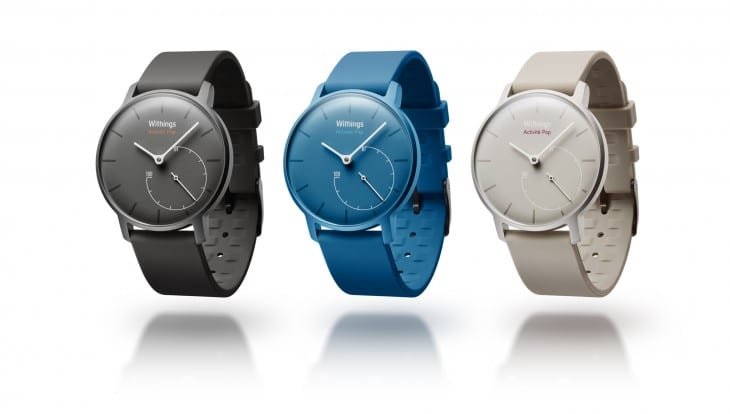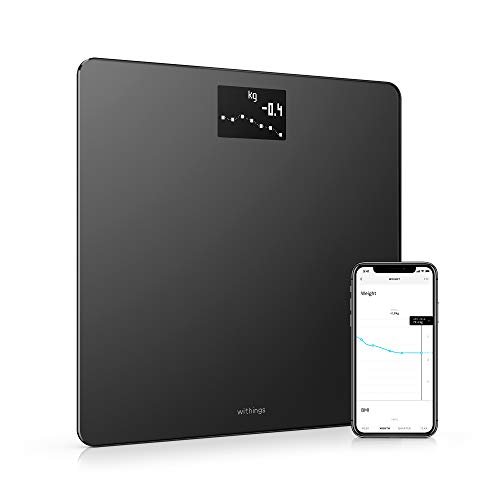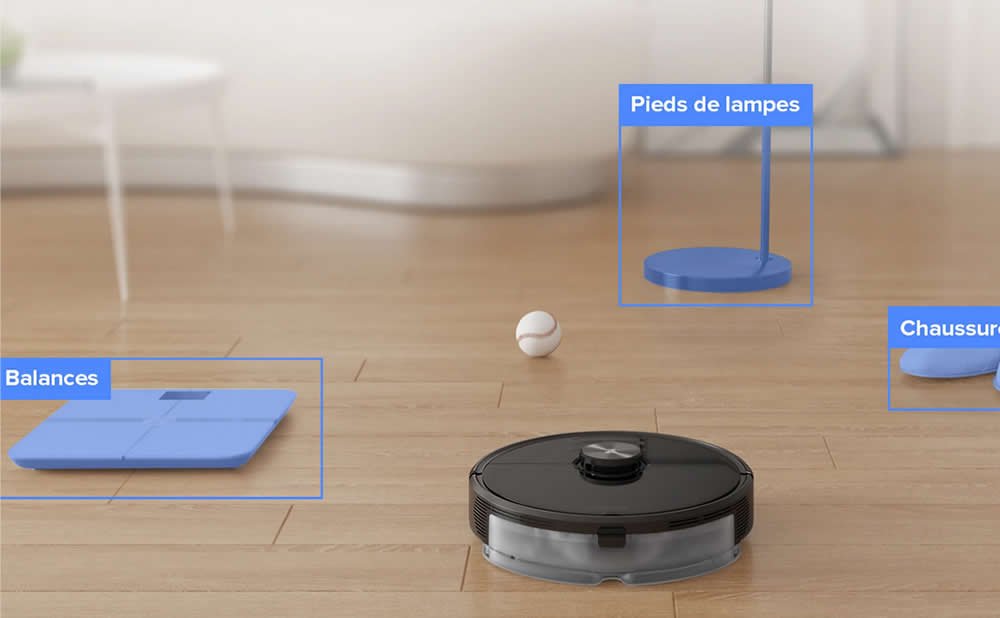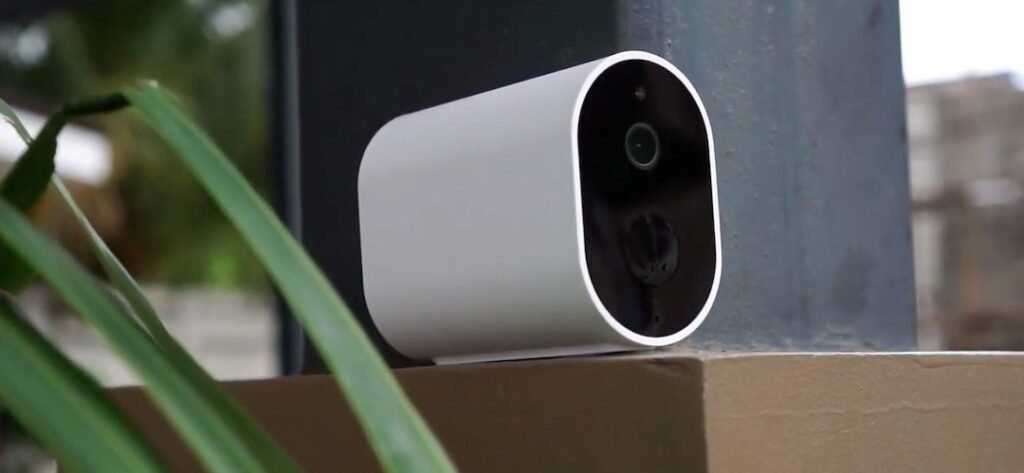This is Xiaomi Amazfit GTS! Alongside its sidekicks Bip S and Bip Lite of the same format and from the same brand, this activity tracker with strangely familiar shapes comes to titillate sports connected watches with a very attractive price and many features dedicated to health. But in a market increasingly saturated with connected objects, does it really have something to stand out? Answer in our test.
Amazfit, a Xiaomi subsidiary dedicated to smartwacts, offered to test its GTS activity tracker. Marketed at 129 € on Amazon, the latter aims to offer an unbeatable quality / price ratio in this segment.
This is not the first attempt by Amazfit in this area. The brand has in its catalog two devices very similar in functionality: the Bip Lite at $49 and the Bip S at $69 . The GTS stands out, however, with a larger screen using AMOLED technology. However, does it justify a price almost twice as high as its counterparts? This is what we invite you to find out in this test.
Amazfit GTS: technical sheet
We are not going to insult you with yet another introduction to Amazfit. So we’ll get to the point, telling you that the brand’s main goal is to lower prices, just like Xiaomi does with smartphones.
But low price does not necessarily mean low quality specifications, quite the contrary. The Amazfit GTS is surprisingly well supplied, the proof with the technical sheet:
43 mm case
1.65 ”AMOLED screen – 348 x 442 px – 341 ppi – Gorilla Glass 3
20mm interchangeable straps
Bluetooth 5.0
Heart rate sensor
Track 12 different sports
GPS + GLONASS
Water resistant 5 ATM
220 mAh battery
Dimensions: 43.25 x 36.25 x 9.4 mm – Weight: 25 grams
Amazfit OS – Compatible smartphones Android 5.0 and iOS 10 or higher
For less than 130 €, it must be admitted that it is very complete. The big advantage of this activity tracker is clearly its AMOLED display, its counterparts generally content with less advanced technologies.
To be honest, the Amazfit GTS goes beyond more expensive tenors like the Fitbit Charge 4 to name just one. Be careful though, we stay with a proprietary operating system which quickly turns out to be very closed. Although it looks like it, the Amazfit GTS remains primarily an activity tracker rather than a real smartwatch.

Design
This was already the case with the Bip S and Bip Lite, but the Amazfit GTS seems to be even closer to the Apple Watch in terms of design. Note, we could also compare this tracker to the late Pebble Time Steel to a lesser extent …
We therefore have a rectangular case with rounded edges. The borders are aluminum, but the back remains plastic.
A single button adorns the right side. A short press turns the screen on or off, while a long press launches sports tracking. It is however possible to customize the action assigned to this button, which is pretty cool!
Unlike the Amazfit T-Rex, here we take advantage of standard 20mm straps. If ever the soft silicone model offered by the Chinese brand does not suit you, you can change it to any other bracelet on the market. It’s always good to know in the event of a breakage.
On the back, we find the classic heart rate sensor, as well as two pads for charging. The whole is magnetized so as not to make a mistake with the charger.
 Once on the wrist, the tracker is quickly forgotten with its only 25 grams. All in finesse, it is elegant and discreet at the same time. We are far from the strange look of the Amazfit Verge and that’s good!
Once on the wrist, the tracker is quickly forgotten with its only 25 grams. All in finesse, it is elegant and discreet at the same time. We are far from the strange look of the Amazfit Verge and that’s good!
 Screen: a real success!
Screen: a real success!
Unlike its Bip series counterparts, the GTS tracker benefits from the services of an AMOLED panel, which is further reinforced with Gorilla Glass 3 as on the T-Rex. Not only is it flattering to the eye, it’s impact resistant. For the price, you will hardly find better!
With a nice size of 1.65 ”, the screen of the Amazfit GTS displays very beautiful colors. The interface of course makes heavy use of the deep blacks of AMOLED to bring out the vivid color contrasts. Thanks to the beautiful definition of the whole, you really get a very good viewing experience.
To be honest, the Amazfit GTS has nothing to envy smartwatches like the Fossil Gen 5 or the Samsung Galaxy Active2 at this level. Even in direct sunlight, the information remains readable. We are a little lower than the competitors mentioned just before, but given the price of the GTS we can hardly blame it for anything!
An ambient light sensor allows automatic adjustment of the light output. It is doing better than on the T-Rex, despite the light still too strong at night. A word of advice: turn off the automatic switching on of the screen during sleep hours.
Operating System: Amazfit OS equal to itself
Since its birth, the Xiaomi subsidiary has been developing its own in-house system called Amazfit OS. Based on Android, it has gradually simplified in recent years to focus on the essentials. So we end up with a very easy-to-use tracker, but with really limited functionality.
Navigation within the interface is done as on other connected watches of the Chinese brand. Everything goes through the touch screen, the single physical button on the edge of the case serving as a shortcut to your favorite application.
The main screen displays a customizable dial. This is the first time we’ve seen this on a smartwatch from this brand and we have to admit that it’s very pleasant. The large screen allows you to display beautiful graphics and a lot of information on the main dial. Besides, you have the choice between an analog or digital model. Several dozen other watchfaces are also downloadable via the application. Unfortunately, these are not customizable.
To access the quick settings, just swipe up and down. The dedicated screen displays connection status, remaining battery, time, weather, current UV index and offers you four buttons. These are used to activate the torch – the screen is pushed to full white – or automatic brightness. You can also access the Do Not Disturb mode settings. Finally, a touch button is used to lock the screen if necessary, for example when the tracker is immersed.
If you want to access more parameters, then swipe up from the bottom up from the main screen. A list appears with all the applications of the sports connected watch:
state
PAI
Cardiac frequency
Sport
Activities
Weather forecast
Music
Notifications
Alarm
Event reminder
More
Settings
This long list grows even further by pressing More with a stopwatch, timer or even a compass. If needed, you can remove items you don’t use using the Android or iOS app.
Finally, there are two more dials by sliding left or right from the main clock. The first shows your progress for the day with the number of steps, distance covered and calories burned. By pressing it, we arrive on a graph revealing the scores of the week.
The second dial concerns the monitoring of heart rate. It displays a color code corresponding to your current zone: relax, warm up, fat burning, aerobic, anaerobic and limit anaerobic. Yes, the translations leave something to be desired … By pressing this dial, you also access a graph which gives you an overview of the variations over the last 12 hours, as well as the percentage spent in each zone.
The whole is therefore focused on sports monitoring above all. It’s simple and functional. We would have just appreciated better translations and a smoother interface. But at this price point, you can’t have everything …
 Amazfit application: elegant but not to the point
Amazfit application: elegant but not to the point
We already walked the Amazfit app back and forth in our T-Rex watch review. Operation with the GTS tracker remains the same.
We end up with a colorful interface, a bit like the watch itself. Most of the data is displayed in the main tab, from step count to heart rate to sleep tracking. We also discover the PAI score, specific to Amazfit productions and implemented a few months ago.
The most assiduous athletes can enter various values such as their muscle size, their weight or their blood pressure to improve the monitoring of their physical condition. Note that you have to enter this data manually, as the brand currently only offers connected watches in its European catalog.
On the parameter side, we quickly notice a great deal of redundancy in the various settings of the GTS. Add to that the often awkward translations. The Amazfit application still requires a lot of work to really be complete and above all on par with the competition.
Sports functions: good value for money
Like any self-respecting activity tracker, the GTS offers its users to follow several activities, listed below:
Running outside
Market
Cycling outdoors
Indoor race
Indoor cycling
Open water swimming
Swimming pool
Elliptical
Mountaineering
Running
Ski
Freestyle
To start tracking, simply hold down the watch button for a few seconds and select the desired sport from the list. In most cases, we find the same metrics: number of steps, heart rate in real time, calories burned, etc …
The integrated GPS in the Amazfit GTS allows relatively precise tracking of speed and altitude. It also works quite well and does not shut off in full swing like the T-Rex. However, don’t expect to have a real-time track of your journey on the screen. Note that the tracker does not have an automatic pause. If you choose to swim in a pool or in open water, the screen automatically locks. Data navigation is then done by pressing the physical button on the GTS.
Regarding the accuracy of the readings, we have already seen better. The heart rate sensor sometimes tends to display erroneous data, such as a pulse of 40 during the day, for example. Fortunately, this behavior remains quite rare and does not affect the activity records, which are rather consistent overall.
On the sleep analysis side, this is also correct but nothing more. While the sports smartwatch can detect the times when you fall asleep and wake up quite accurately, it has a harder time spotting nocturnal awakenings, often placing them in the “light sleep” category. From this point of view, the T-Rex is more efficient.

Overall, the Amazfit GTS is doing well. The little activity tracker, however, is not the most accurate on the market and will not satisfy athletes looking for very precise data. It will nevertheless be sufficient to ensure a healthy base for beginners who want to collect some metrics on their activities.
Connected functions: the minimum union
Just like Huawei with Lite OS or Fitbit with Fitbit OS, Amazfit is betting on developing its own in-house operating system, soberly named… Amazfit OS. And like any proprietary system, it has the same flaws.
If the sport part is rather well done, Amazfit OS is unfortunately very poor when we approach the connected functions. Forget therefore any desire for contactless payment via NFC, any presence of a voice assistant or even the possibility of responding to your SMS with pre-recorded messages.
Here we are faced with embodied minimalism. Apart from its ability to ring the smartphone in case of loss or display your notifications in a purified form, the Amazfit GTS does not do much smart … Even the control of the music of the smartphone is a mess: as soon as the watch screen goes to sleep, you must reopen the Music application after having searched the list. So heavy that we will quickly leave aside this feature …
It is not possible to add any applications to the sports watch. As for the dials, you can download several dozen from the app. These are unfortunately not customizable like the two basic watchfaces.
You will understand, the Amazfit GTS is not intended for people fond of customization and advanced functions. The device is primarily positioned as a basic activity tracker.
Battery life: up to 10 days of use
Hate charging your smartwatch every day or – at best – every other day? Then the Amazfit GTS might be for you.
Although the Chinese tracker only ships a 220 mAh battery, the latter is capable of giving it more than a week of use without worry. During our tests, a full charge will have provided approximately ten days of battery life.
Of course, it all depends on your habits and settings. By default, the heart rate sensor takes one reading per minute. The screen is set to turn on when you lift your wrist and the brightness is managed automatically. If you are not too greedy on notifications and GPS exercises, then you can decently last ten days or more.
If you plan to go through the Always On mode of the watch face and with several hours of exercise per day with the GPS, the time will be drastically reduced. But in absolute terms, the GTS will be more enduring than a watch running Wear OS or Tizen.
Charging is in the usual average, around two hours. Amazfit offers a very light and space-saving magnetic dock, far more practical than the horrible failure of the Amazfit Verge. The good news is, you won’t have to use it every day!
Xiaomi Amazfit GTS review
A “high-end” spiritual successor to the Amazfit Bip Lite and Bip S, the GTS is a pretty cool activity tracker. It is above all thanks to its very well-designed AMOLED screen and good battery life that it stands out from the competition.
For the rest, it is better not to be too careful: poorly translated interface, almost non-existent connected functions, impossibility of installing other applications on the watch … The Amazfit brand ultimately remains equal to itself, seeking a recipe that she seems to have trouble finding despite the years.
Do we recommend the Amazfit GTS to you? Yes, but only if you are on a budget and are looking more for an AMOLED activity tracker than a real smartwatch. At less than $130 , the GTS is almost the only interesting proposition in the sector. Take a look at the other productions of the Asian brand, the prices are so tight that the internal competition is raging.
Read also


 Screen: a real success!
Screen: a real success! Amazfit application: elegant but not to the point
Amazfit application: elegant but not to the point


















